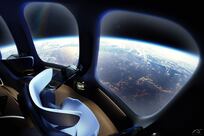Filmmakers should only be allowed "one big scientific blunder" in any given film, according to proposals outlined by the US-based Science and Entertainment Exchange.
In this movie, scientists use dinosaur DNA encased in amber to revive the extinct creatures. But DNA doesn't have a 65-million-year shelf life. Also, in the sequels, the dinosaurs somehow "evolve" near-human levels of communication in just a few years.
When the Earth's outer core stops rotating and the planet's magnetic field breaks down, a team of "terranauts" tunnel through the crust and detonate a nuclear bomb to put things right. Voted by scientists as "the worst physics movie ever".
Instead of taking decades for climate change to occur, the weather destroys major cities practically overnight. Many scientists were pleased to see climate change tackled in a major film, but some felt that it made a mockery of the issue.
Robert Langdon races against time to recover a vial of antimatter that could destroy the Vatican. Not only does the flask hold more antimatter than scientists could produce in millions of years, but as one scientist put it: "You can't contain it using an iPod battery."
Its tagline, "In space no one can hear you scream", has been derided for stating the obvious: no sound can travel in a vacuum. It also renders impossible the scene when the spaceship Nostromo explodes in a bright white light.





